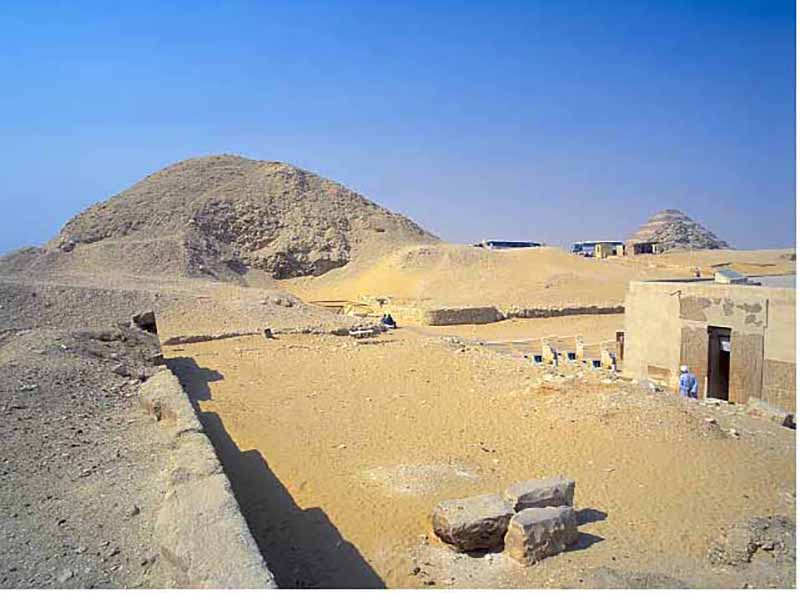

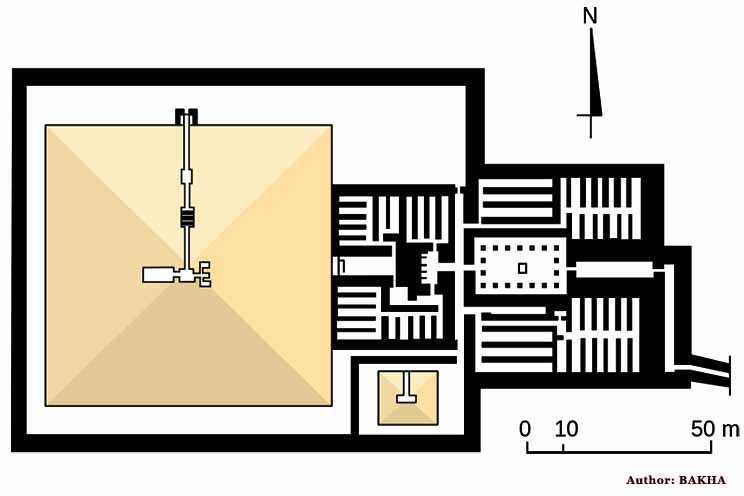
Original name: The sites of Teti persist
Original height: 52.5 m / 175 ft
Base length: 78.5 m / 262 ft
Date of construction: 6th dynasty
Angle of inclination: 53° 7'48"
Date of construction: 6th dynasty
The Pyramid of Teti, was discovered by British Egyptologist John Perring in 1839. But only 43 years later, in 1882, after discovering of the First Pages of the Book of the Dead in the depths of the Pyramid of Unas, French Egyptologist Gaston Maspero has found its next Chapters here in the Burial Chamber of the VI Dynasty King Teti. Further excavations were carried out by English Egyptologist James Quibell in 1907– 8 and under the guidance of the French archaeologists Jean-Philippe Lauer, Jean Leclant and others, who headed excavation works already at the end of the XXth century.
The entrance to the Pyramid, as well as the entrance into the Pyramid of Unas, was found on its northern side at a ground level. The Descending Passage of the Pyramid of Teti, lined in granite, leads to the Horizontal Corridor, which in the ancient times was blocked by the three granite portcullis. The Antechamber with a vaulted ceiling, made of massive limestone blocks, painted with star relief, is located directly under the center of the Pyramid and leads into the Burial Chamber with a sarcophagus.
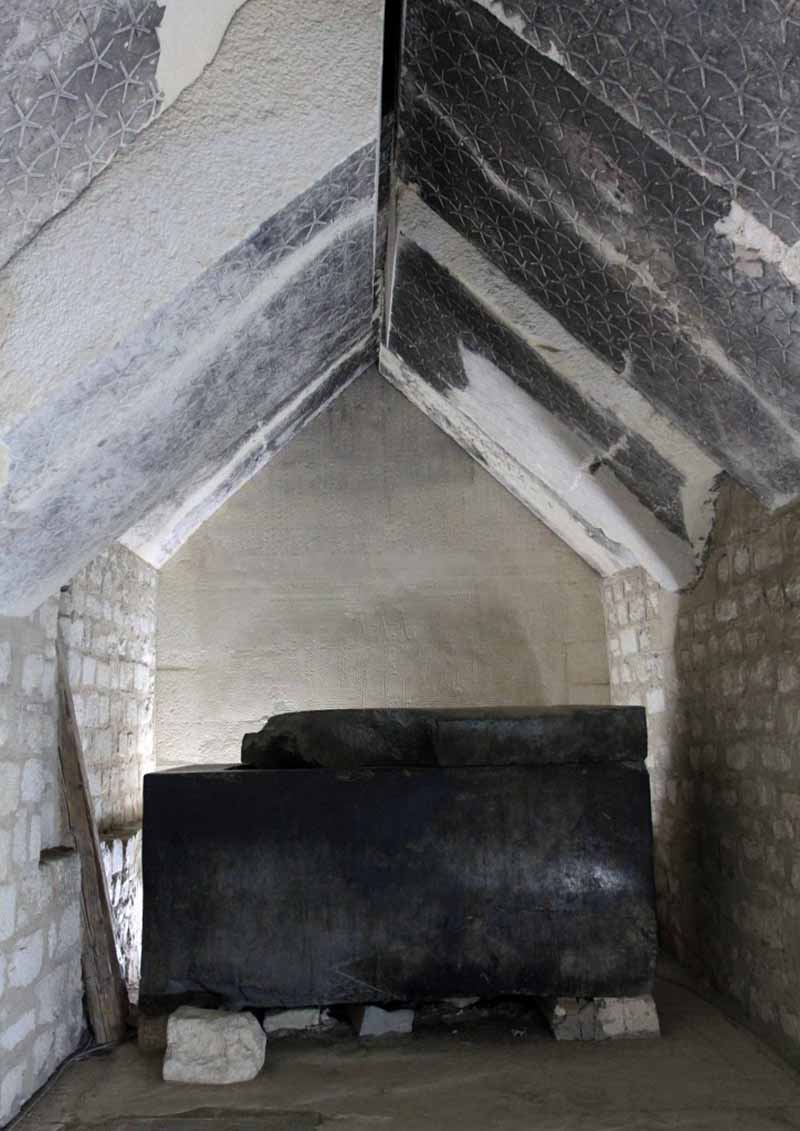
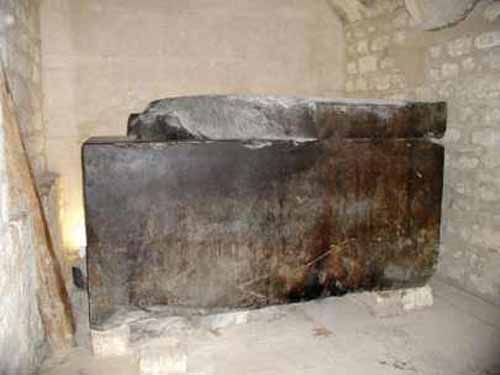
Like the Pyramid of Unas, the walls of Teti's Burial Chamber, the Antechamber and a part of the Horizontal Passage are decorated with the Pyramid Texts. This is the second known Pyramid, which contains the Burial Texts, describing the King’s journey from the Living World to the World of the Dead.
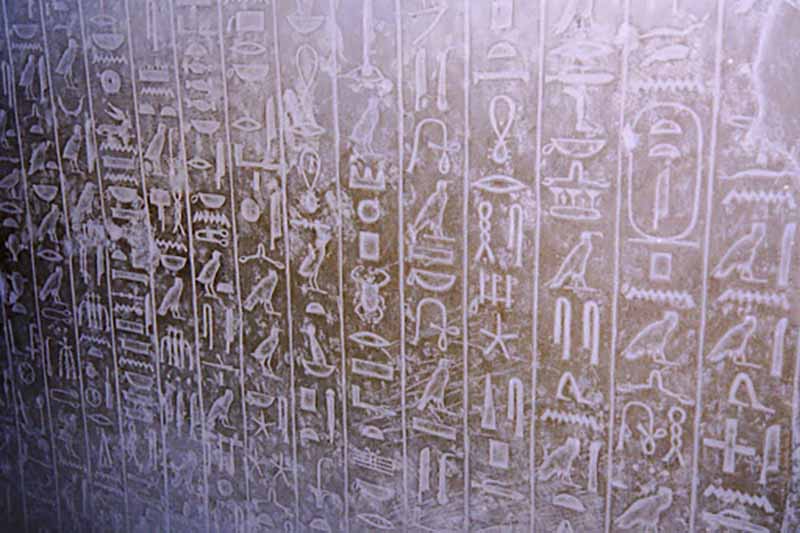
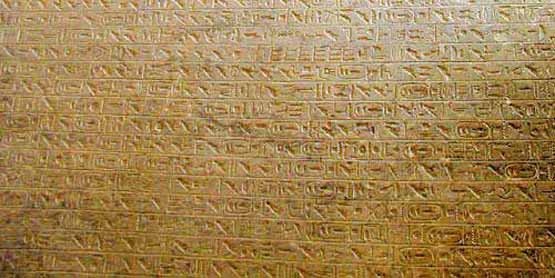 >
>
The Antechamber has two entrances - to the Eastern Chamber and to the Western one. The Eastern Chamber has three niches, and the Western Chamber - represents itself the Burial Chamber with sarcophagus.
Teti was the founder of the 6th Dynasty (2345-2181 BC). His pyramid was discovered in 1853 by Mariette, but it is mostly a pile of rubble in constant danger of being covered by the sand. There is a steep pathway that leads to the funerary chamber. The chamber ceiling is decorated with stars.
He ruled Ancient Egypt from 2323 till 2291 BC. His wife, Queen Ipwet, is the daughter of King Wenis who was the last king of the 5th Dynasty. The queen was the mother of Teti's heir, King Pepi I. Historians believe that she is the one that gave him the royal power. Almost all the major court officials of King Wenis remained in power during Teti's reign. The king was murdered by his guards for mysterious reasons.
Teti granted more lands to Abydos and his name was inscribed in Hatnub. He built a pyramid in Saqqara which is called by modern Egyptians the " Prison Pyramid". Most of his reign was not documented. Egyptologists discovered a statue of him made of black and pink granite. The statue is located at the Egyptian museum. Teti's son-in-law, Mereruka, was also his vizier. The Mastaba of Mereruka is located in Saqqara.
The pyramid of Teti is surrounded by some of the most important Mastabas of Saqqara. The pyramid itself has deteriorated due to human intervention. The burial chamber still holds hieroglyphic texts, the so-called Pyramid Texts.
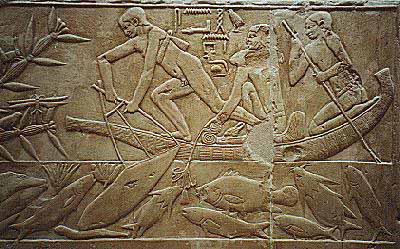
Relief showing fishermen in the mastaba of Kagemni, vizierand judge under three kings of the 5th and 6th Dynasties. The tomb is just north of the pyramid of Teti.
All over Saqqara you can find tombs from different periods. Around the northern-most of Saqqara's pyramids is that of the 6th Dynasty Pharaoh Teti.
Adjacent Teti's pyramid are the mastabas (free-standing tombs of earlier periods) of his officials, some of whom had marvelous reliefs created for themselves.
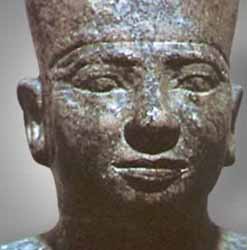
Teti
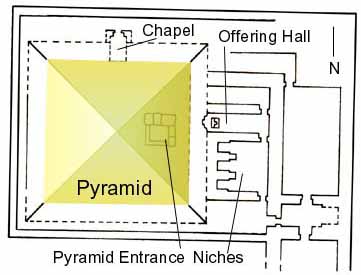
Iput I was probably Teti's (6th Dynasty) principle queen, and may have legitimized his ascent to the throne of Egypt. She was probably the daughter of Unas (5th Dynasty) and the mother of Teti's successor, Pepi I. Her pyramid was discovered by Loret at the beginning of the 20th century, and later investigated by Firth, with Gunn's assistance, in the 1920s. Dr. Hawass, one of the current living legends of Egyptology, continues this investigation.
This complex, located about 90 meters north of Teti's pyramid, has no valley temple, causeway or cult pyramid.
This complex has a number of unusual features, The mortuary temple, located on the east side of the pyramid, has a far from standard floor plan. It was entered from Teti's pyramid to the south. The entrance hall had four limestone pillars followed by an antechamber with two pillars. There is also a pillared courtyard. The inner part of the temple consisted of an offering hall and rather then a complete chapel, three deep niches for statues of the queen just south of the offering hall. North of the offering hall was a storeroom.
The Offering hall originally had a limestone false door on the wall facing the pyramid. In front of the false door was a pink granite altar that was inscribed with, "Queen mother (of the pyramid) 'Pepi's splendor is enduring'". This represents the oldest proof of a connection between a queen and the cult of the king.
Dr. Hawass indicates that there are military scenes, unusual for an Old Kingdom monument, engraved in the pillared entrance hall and that in the inner sanctuary are reliefs of offering bearers, sacrificial scenes and a ritual performance held at the palace.
It should be noted that this is not the only mortuary temple of this queen. Another has been found for her in the ancient city of Coptos, a center for the fertility god Min, in southern Egypt.
The pyramid itself has a three step core. As with other contemporary pyramids, it has a north chapel but the entrance to this pyramid is unique, with a vertical shaft that began at the level of the second layer of the core. Because of this, we believe the pyramid was originally meant to be a mastaba and was later transformed into a pyramid probably after her son, Pepi I, ascended to the throne. However, all that is left of the pyramid is the original mastaba section.
The whole of the complex is surrounded by a limestone enclosure wall.
A limestone sarcophagus and fragments of a cedar coffin were found in the burial chamber, along with the bones of a middle aged woman, though Dr. Hawass tells us that it was that of a younger woman. Other items of funerary equipment originally found in the pyramid include five limestone canopic vessels, a gold bracelet and fragments of a necklace, an alabaster headrest, a small alabaster tablet with the names of the seven sacred oils, copper utensils, models of alabaster vessels and other items. The canopic jars are curious because there were usually only four to a set, meaning that the fifth must belong to some other burial.
Discovered by Victor Loret in 1898, until fairly recently, the pyramid of one of Teti's other wives, Khuit, was though to be a mastaba. It was again investigated by Maragioglio and Rinaldi in the 1960s ,but then, in 1995, Dr. Hawass excavated the remains once more and confirmed that it was indeed a small pyramid. Its investigation is is still ongoing. Her pyramid sits just next to that of Ipu I's north of Teti's complex.
The mortuary temple sits in front of the east wall of the pyramid. Little of this apparently has been excavated, but the previously excavated offering hall has the usual false door and altar. Offering bearers decorated the walls.
Evidence of the solidly constructed underground compartments of the pyramid, along with a pink granite sarcophagus, has led Hawass to believe that Queen Khuit, like Iput I, had a significant status.
The pyramid's original entrance was on the north side of the pyramid in the floor of the courtyard. It accessed a descending corridor leading to a burial chamber and east of it, a storage room. The burial chamber sits beneath the vertical axis of the pyramid.